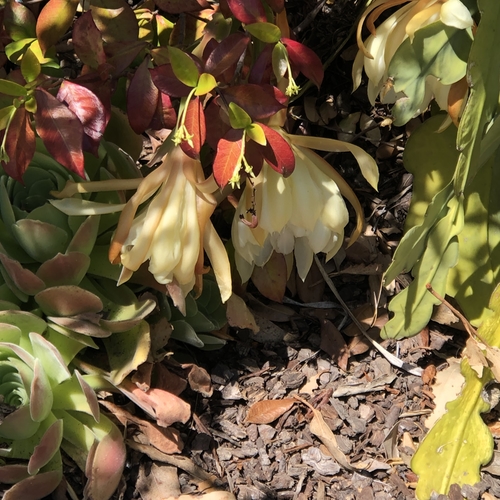This was found on a cutting rooting in a vase of water.
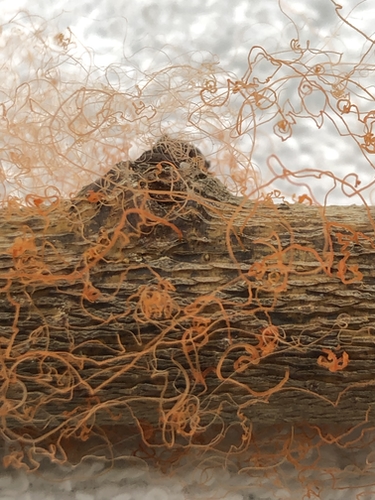
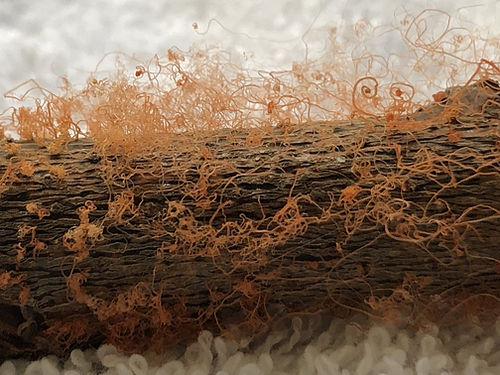

This was found on a cutting rooting in a vase of water.


The book cover is made of three pieces of embroidered hardware cloth. The code of the cover is the word willow. Three Salix cuttings were bound together and then bound to the book cover.
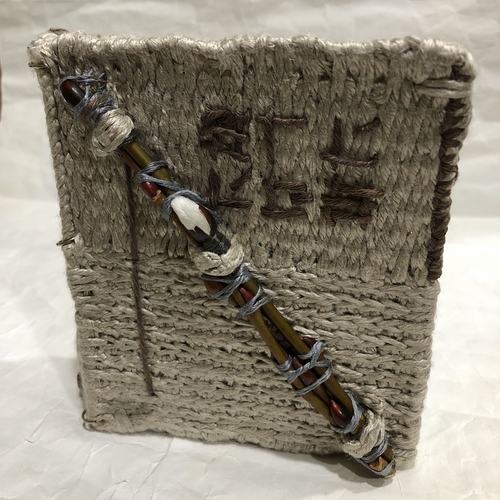
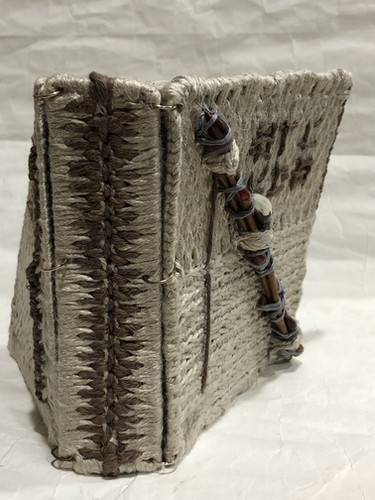
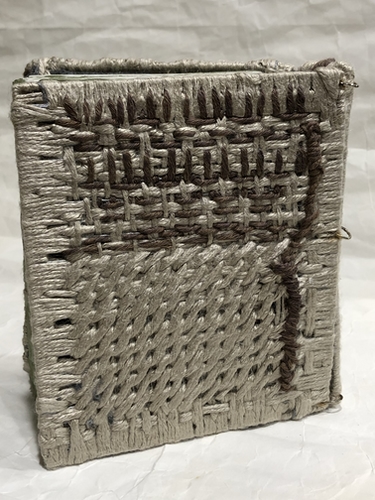
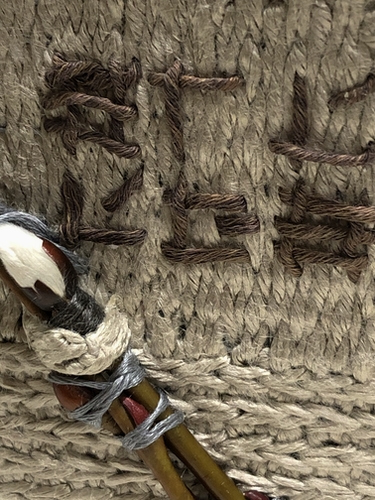
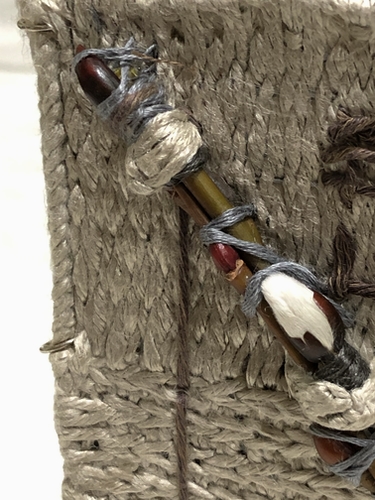
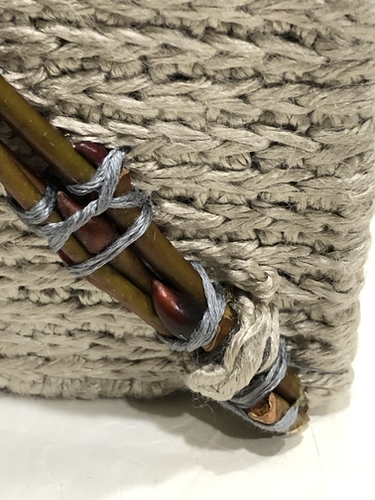
Each page is a piece of textured paper with a slightly wider sheet of green paper.
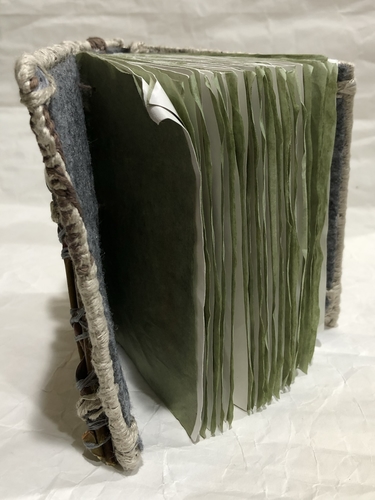
I used a modified Masonic cipher for the code. I made the texture by rolling each sheet diagonally (corner 1) around a piece of dowel. Removed the rolled paper from the dowel. Folded it in half, then pressed the folds together. Rolled the paper diagonally (corner three), folded each direction. The result is a grid of diamonds.
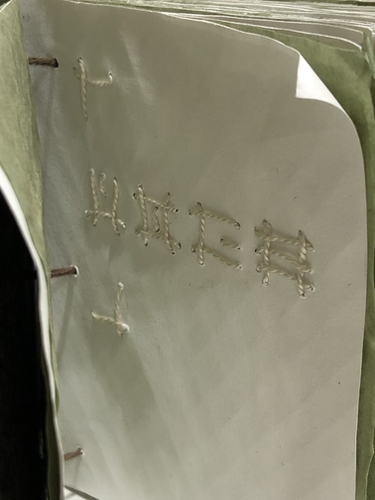
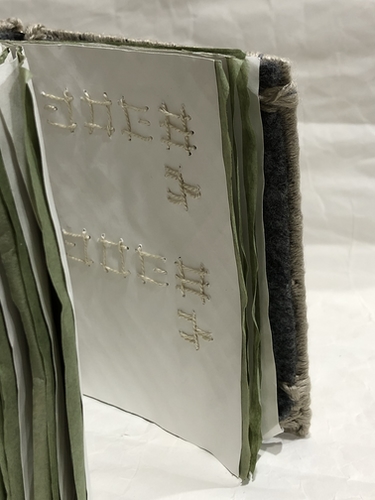
Note Envelope
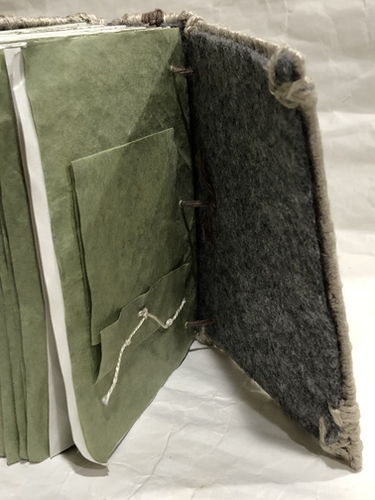
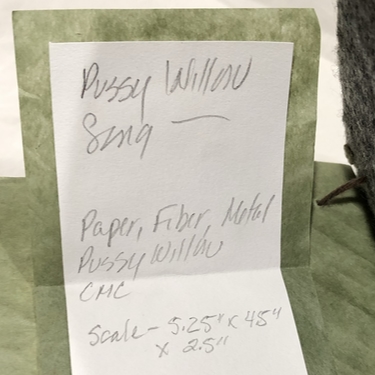
My Salix has catkins. When I was looking at them, I remembered a song I learned in school when I was a child. I suspect the song would be banned in most schools today.
I do have a tendency to perseverate. To attempt to rid myself of the Pussy Willow song I made the wallpiece and I am working on a book with the song in code.
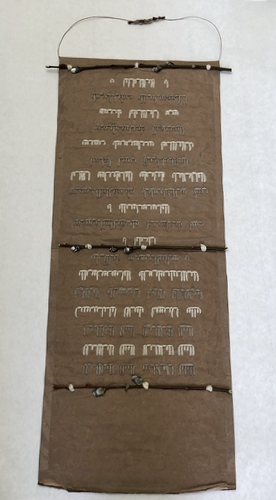
I have an old version of Flash that I use for layout. I like that I can make code symbols that can easily be replaced. I printed the layout and used it for piercing and reference.
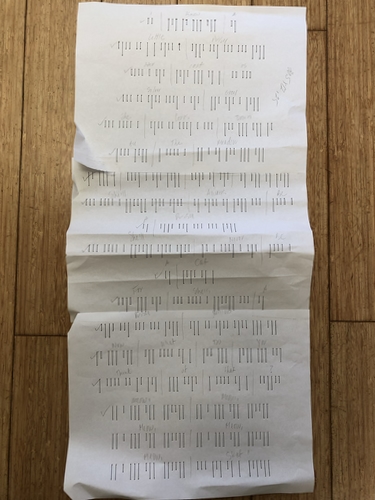
Used a modified Morse Code–short lines for dots, long lines for dashes. Had the ide of connecting the lines for each letter, and for each word.
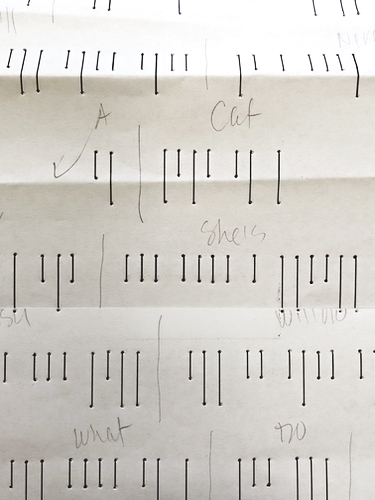
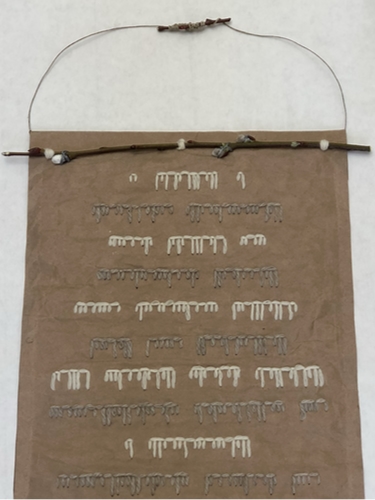
Bound Salix cuttings to the background to break up the text a bit.
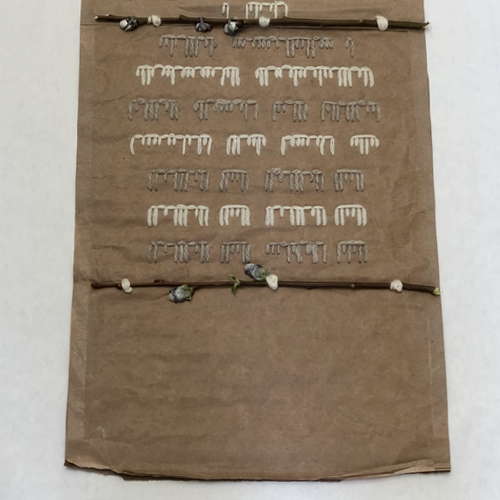
Bound the catkins to the background with the hope of preventing them from falling off.
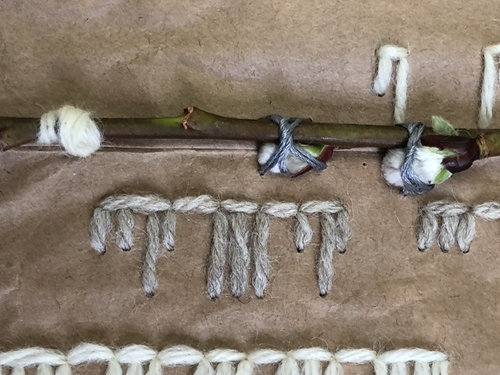
The only space left in my office that was long enough for the piece.
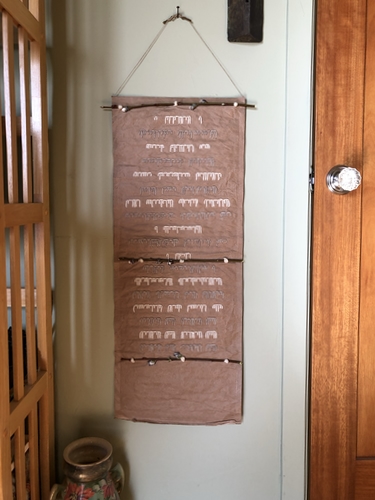
Note envelope attached to the back of the piece.
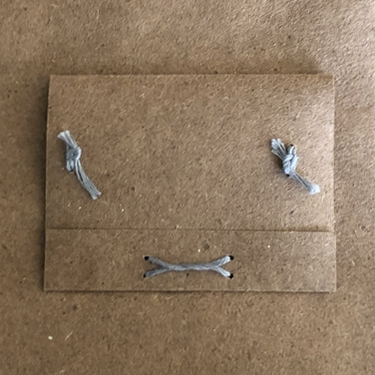
The notes regarding scale are a bit messy. Originally I had another piece of paper glued to the notes. I thought about writing out the lyrics, but decided not. When I removed the paper there was a bit of glue residue left. It prevented the lead from making clear marks.
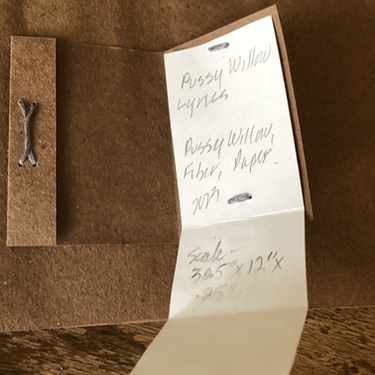
It is a bother. I suspect I will erase the lot, remove the bit with glue and rewrite the notes.
Materials–Used packing envelope, paper, fiber, pussy willow cuttings.
Scale–30.5″ x 12″ x .5″ without hanger. The addition of the hanger adds approximately 7″.
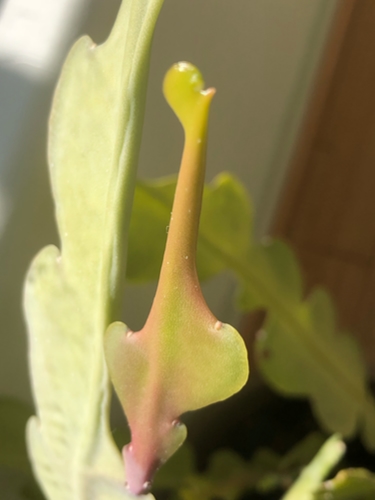
New Growth on the Original Trapped Cactus Cuttings
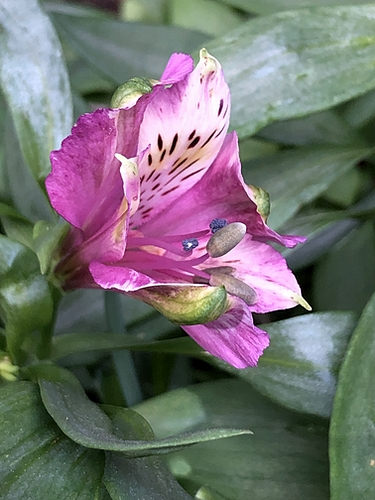
First Alstroemeria Flower of 2023
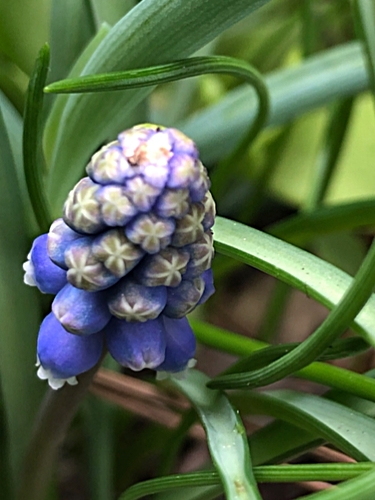
First Time Noticed Muscari Asterisks
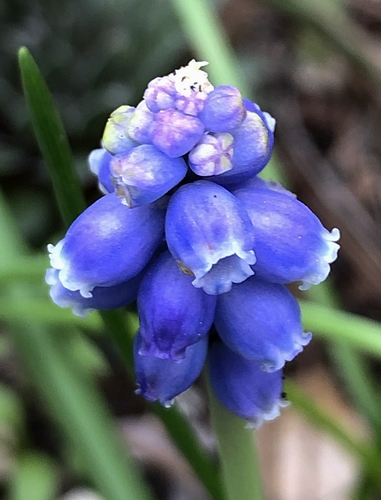
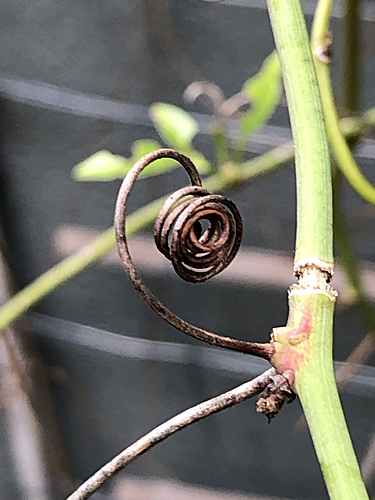
Last Season Passion Vine Tendril
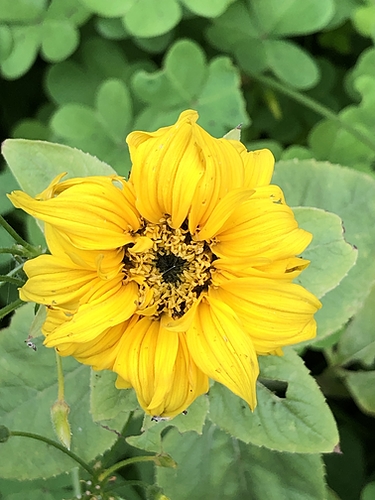
Volunteer in Orchard

Rose Bush is in Need of Attention
Oxalis is considered an invasive plant by the California Invasive Plant Council.
A portion of our garden is covered with the plants. Not planned, just happened.

I cut a few to dry and use in a piece. The flowers are lovely with a sweet, subtle fragrance.
I had a few buds left. Popped them in a small vase of water. Three days later they opened and are still opening during the day and closing at night.
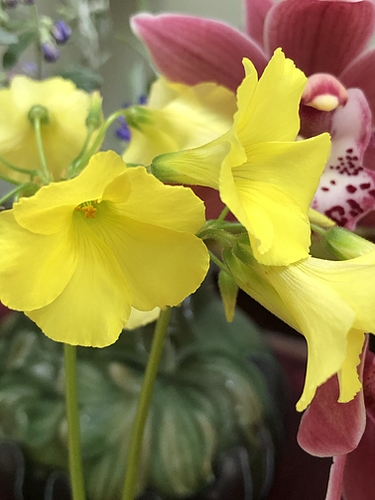
The plants also have interesting foliage.
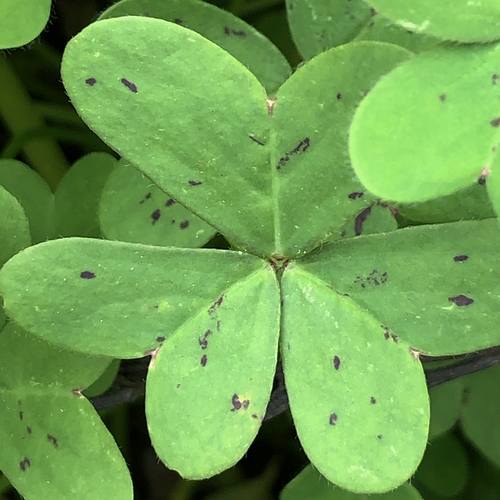
If the flowers are dried in my microwave flower press they become a golden color. When dried in my flower press between layers of blotter paper and cardboard they retain most of their yellow color.
The leaf is nearly dry; the flower completely dry.
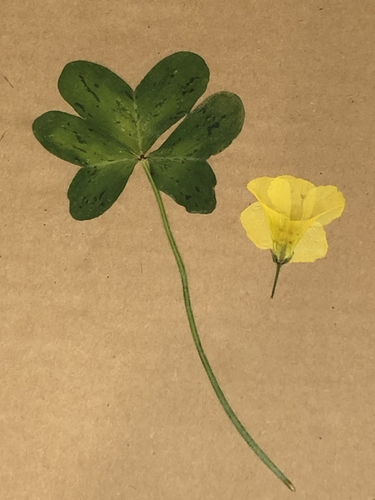
Living on the California Central Coast, during years of drought. “Weeds” can be a nice surprise.
It is odd that they don’t seem to want to grow in the designated gardens. They often grow between pavers, areas that aren’t watered.
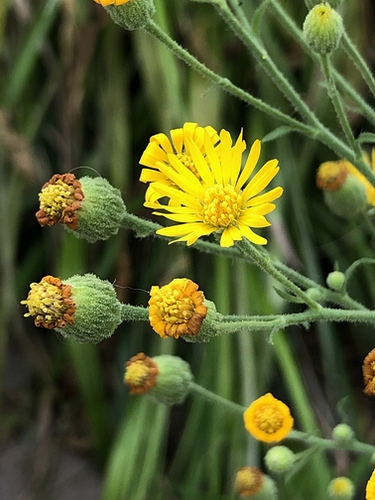
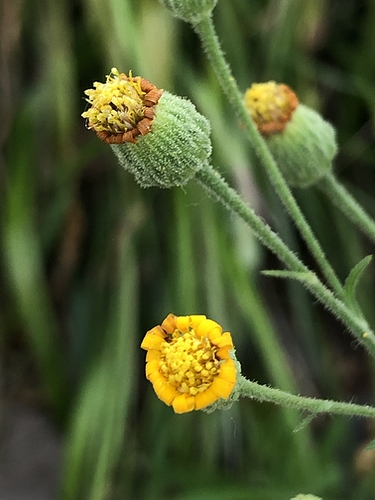
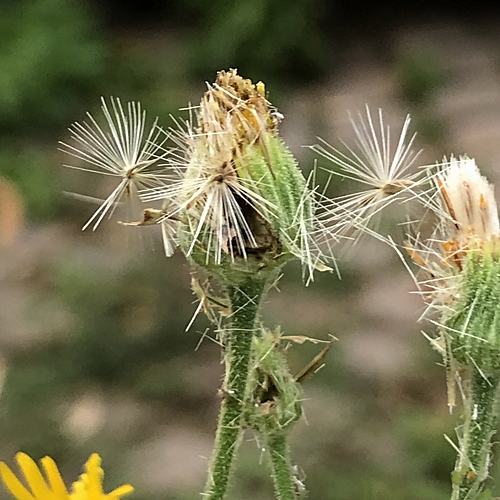
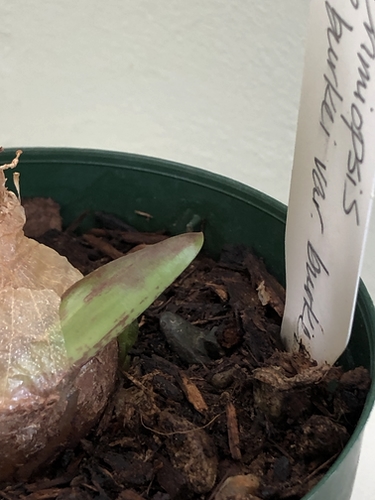
July 1, Drimiopsis New Growth
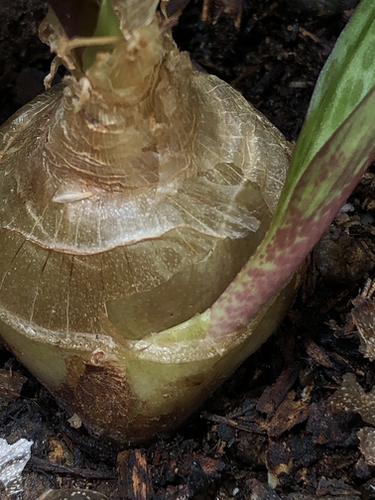
July 7, Drimiopsis New Growth
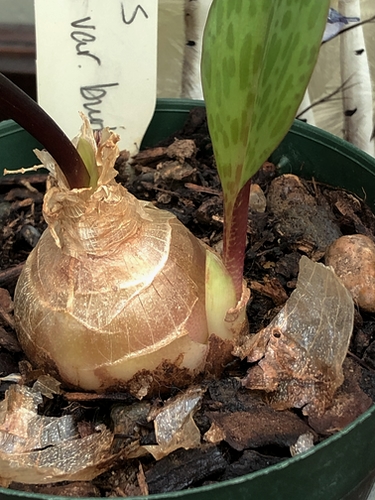
July 7, Paper Cover Removed to Allow Freedom of Growth
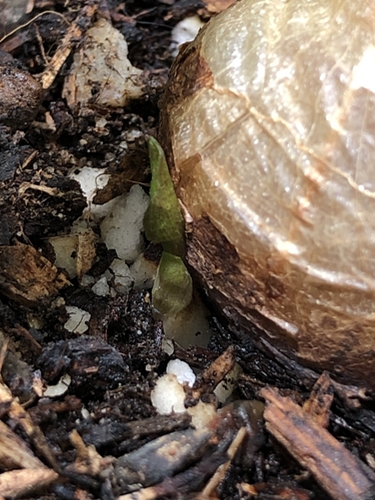
July 7, Drimiopsis Additional New Growth
Code is three words stitched vertically–flowers evoke memories.
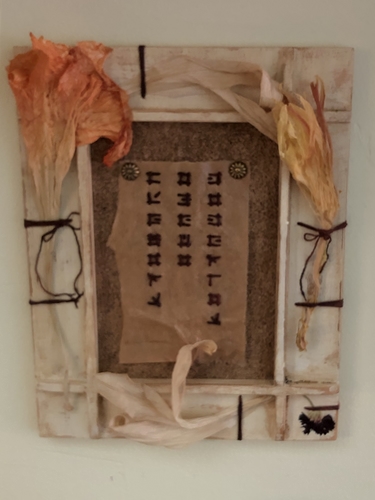
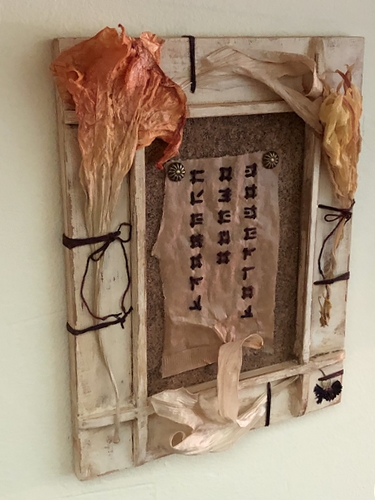
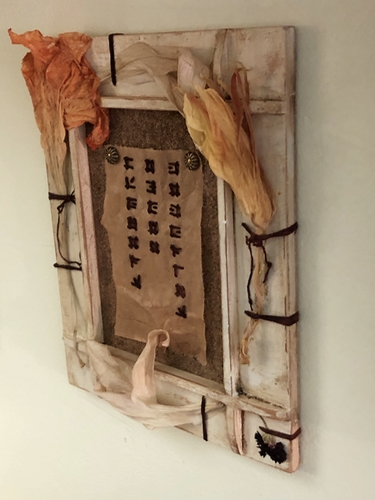
Materials–altered found frame, paint, PVA, dried flowers, cork, paper, bamboo fiber, tacks.
Scale–7.5″ x 10.25″ x 1.75″
Unfurling Evening Primrose
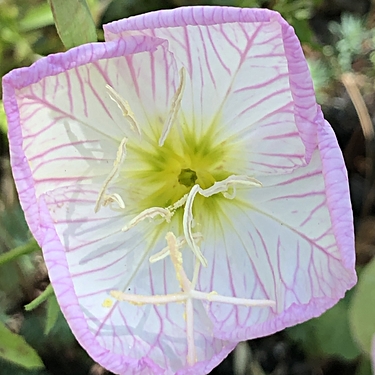
Evening Primrose and Companions…
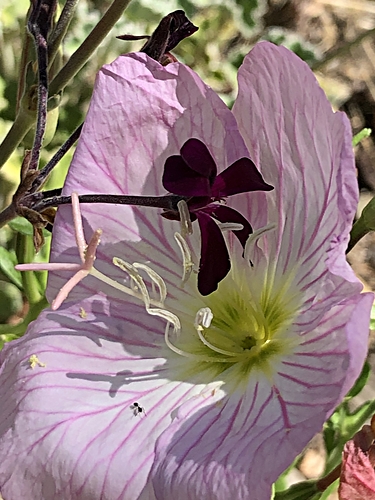
…a geranium and an ant.
Trapped Cactus Original Cutting
Interesting that the flower bud is located on a leaf that I thought was dying.
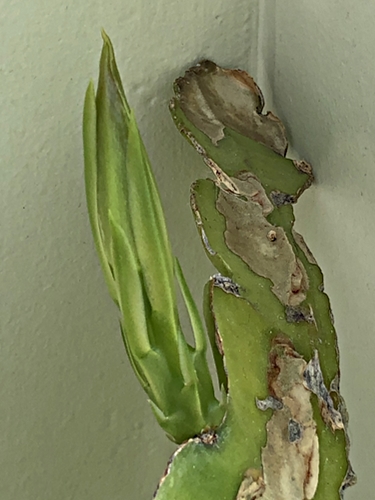
Cutting Taken From Original Trapped Cactus Cutting in Its Normal Setting
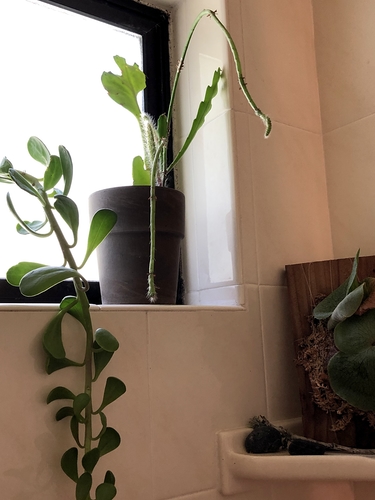
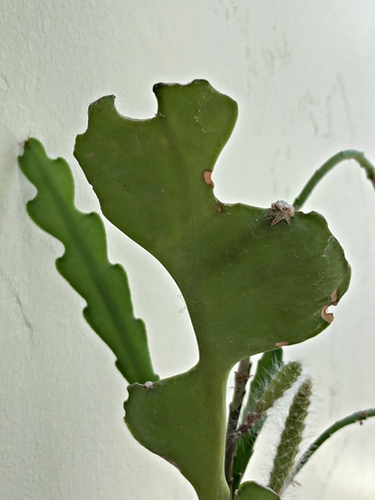
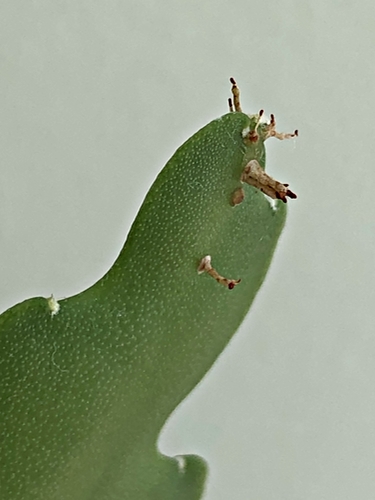
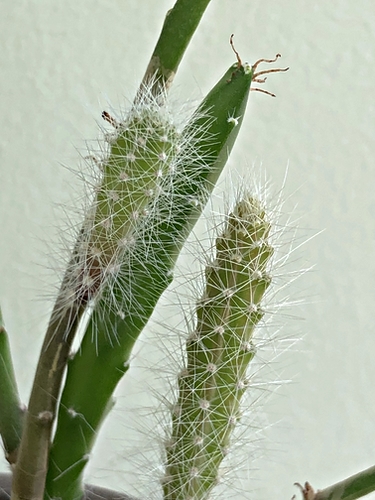
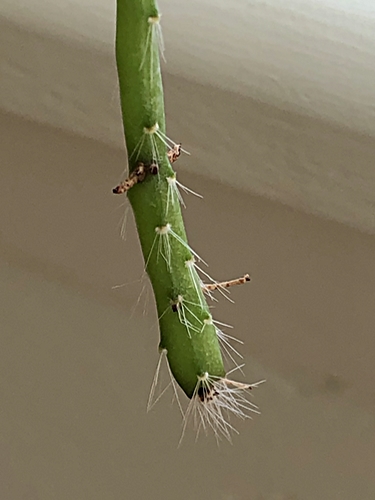
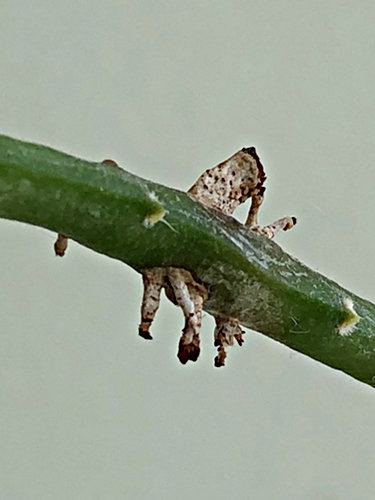
Trapped Cactus Parent May 11 2022
It is still growing in between a fence and a privacy fence.
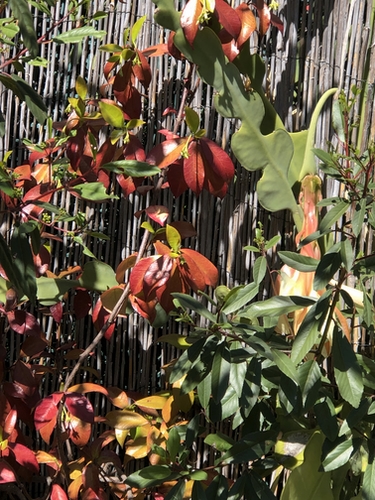
Even in lousy conditions, the Trapped Cactus blooms!
